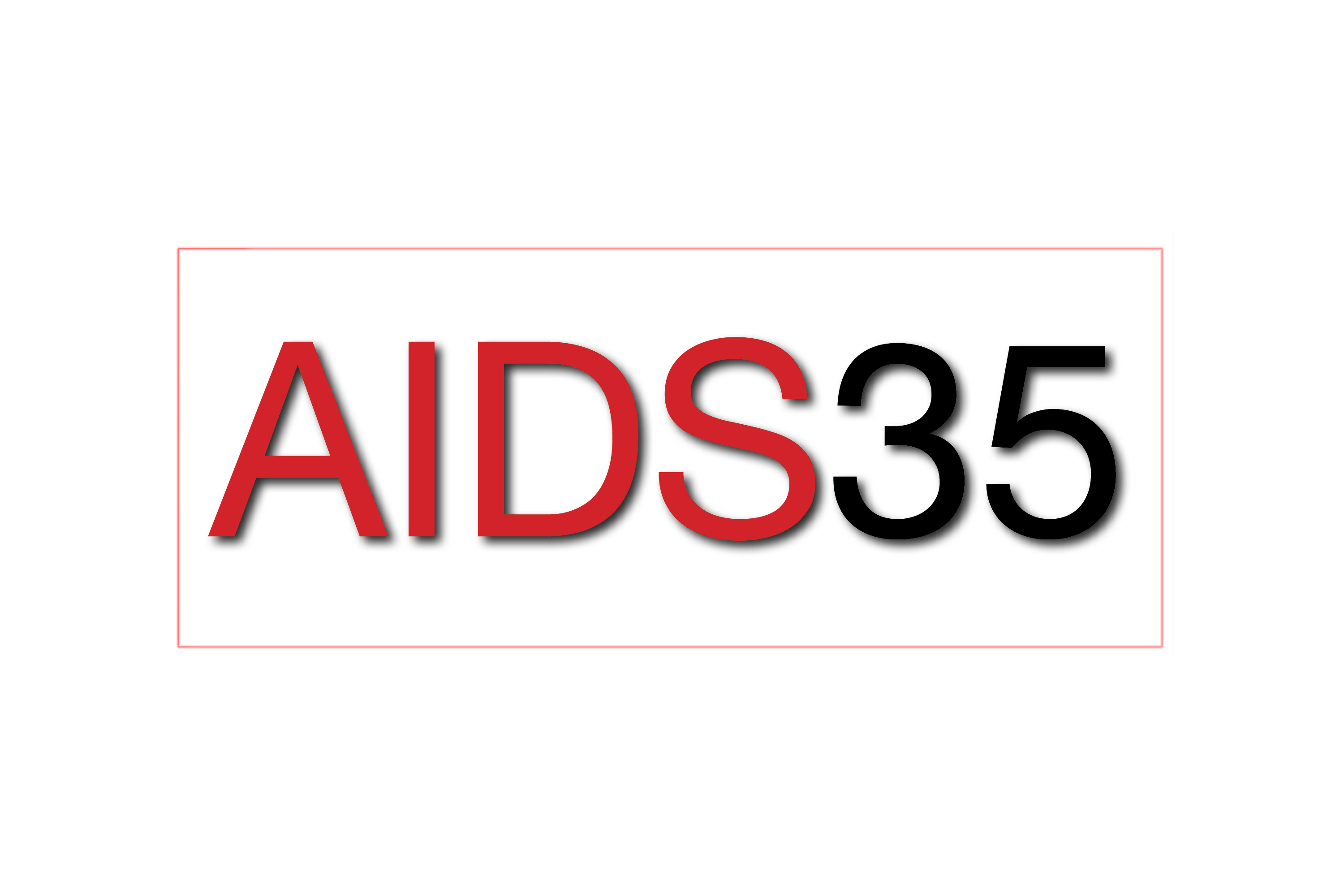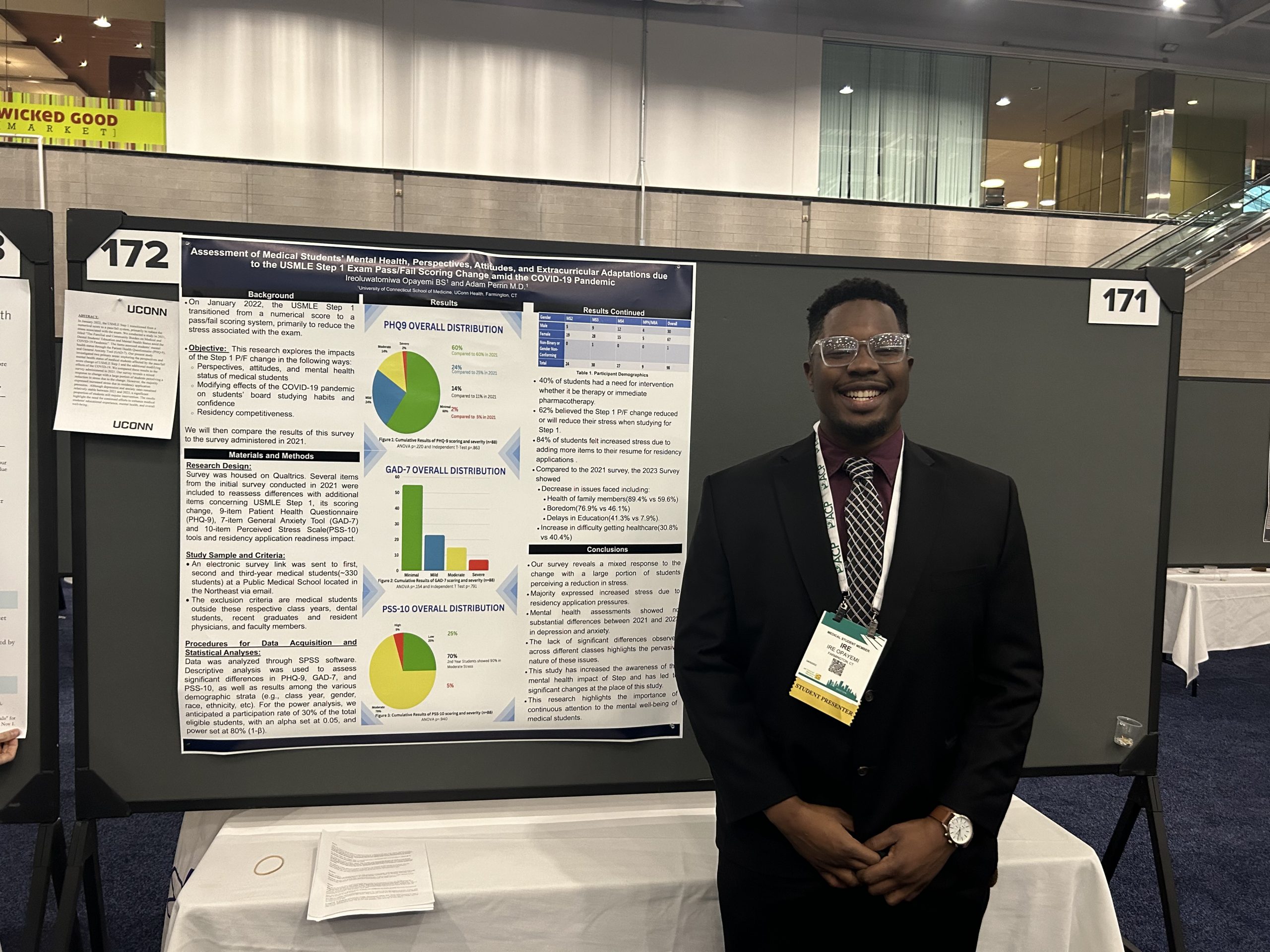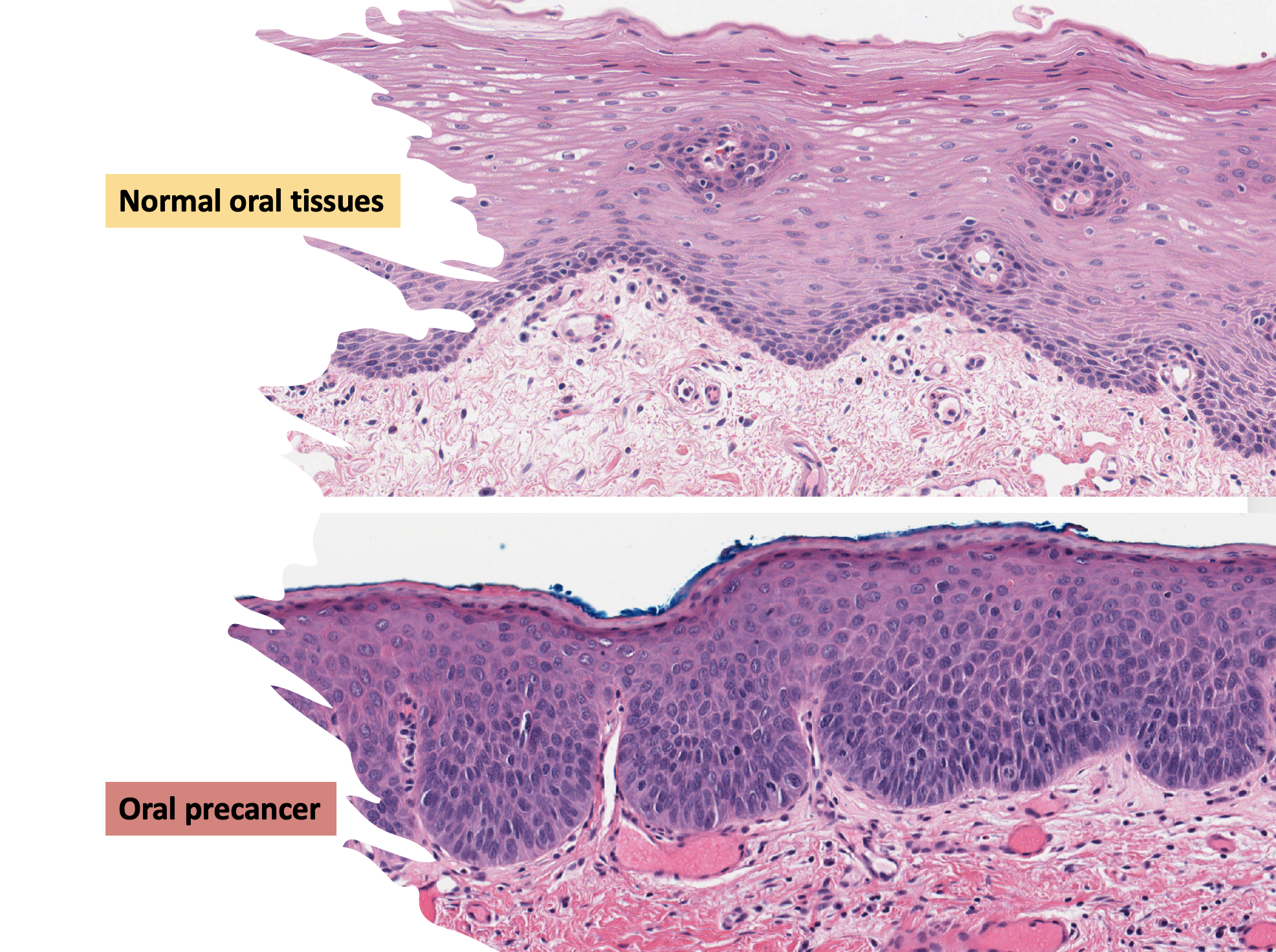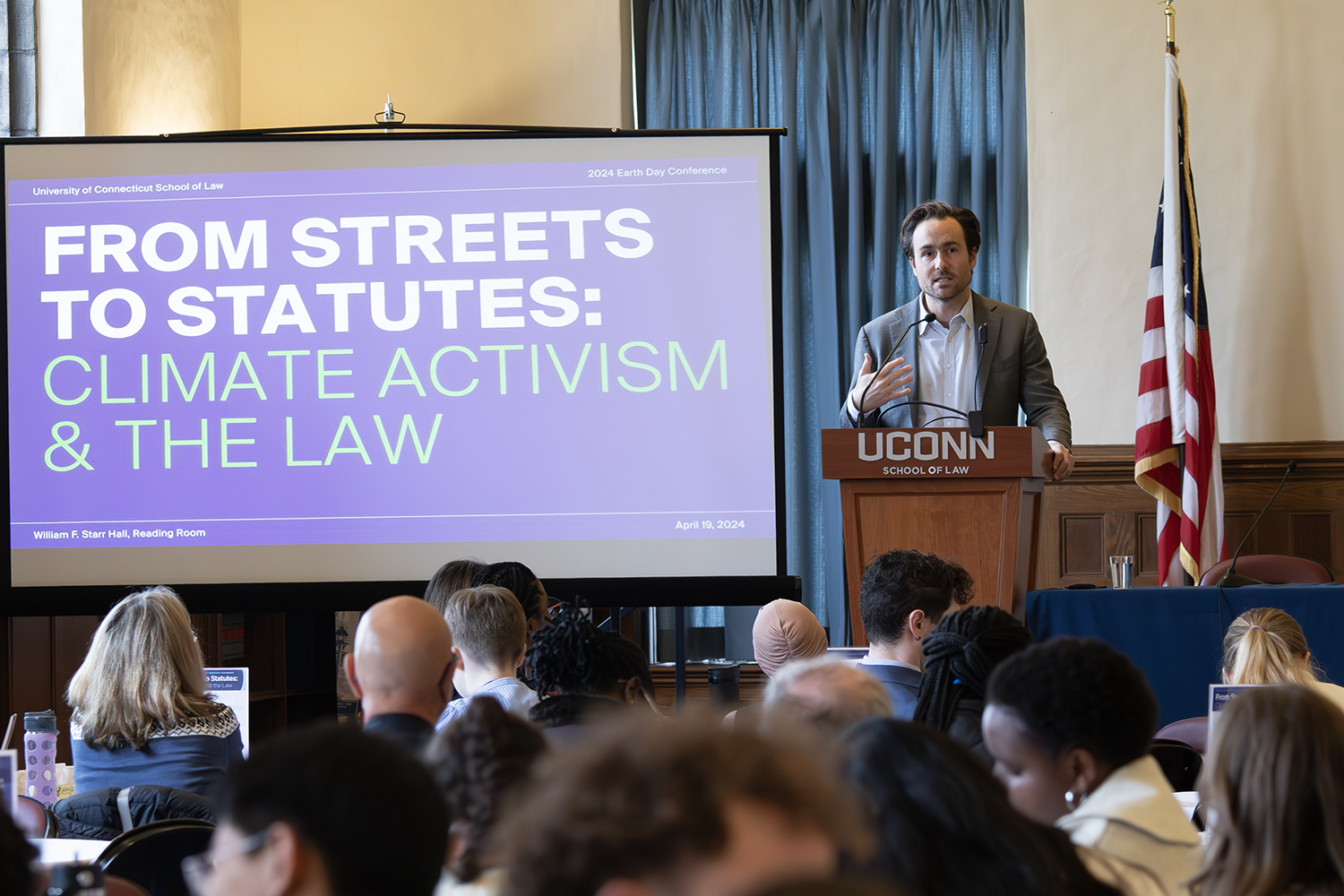Three exhibitions at UConn this fall mark 35 years since the first cases of HIV/AIDS were diagnosed, and 20 years since advances in research changed it from a death sentence to a manageable chronic disease.
Most of today’s undergraduates and many graduate students have never known a world without AIDS, so it’s important to remind them of this social and political history. — Thomas Long
The exhibits reflect images and materials produced in response to the AIDS epidemic or by artists associated with it, including demonstration graphics, safe-sex brochures, cartoons, visual documentaries, and installations, in a variety of media. The materials will be on display at the Thomas J. Dodd Research Center, William Benton Museum of Art, and the Carolyn Ladd Widmer Wing of the School of Nursing.
Human immunodeficiency virus (HIV) and acquired immune deficiency syndrome (AIDS) were identified 35 years ago in the first published reports of what would come to be called the AIDS epidemic but were initially identified as rare cancers among gay men, Haitian immigrants, intravenous drug users, and hemophiliacs. Twenty years later, the introduction of protease inhibitors and other antiretroviral medications provided treatment for the disease that had caused 11.7 million deaths worldwide, according to a 1998 World Health Organization report.
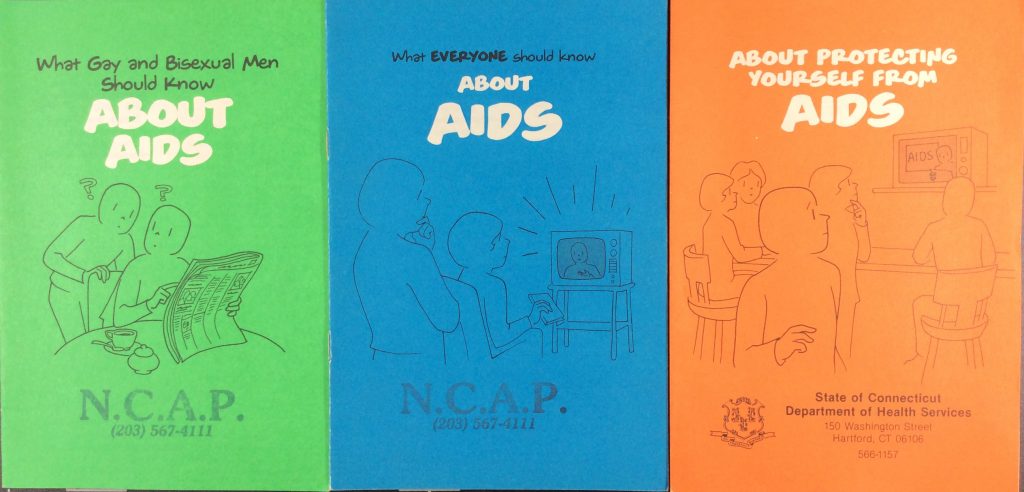
“Most of today’s undergraduates and many graduate students have never known a world without AIDS, so it’s important to remind them of this social and political history,” says Thomas Lawrence Long, associate professor-in-residence in the UConn School of Nursing and curator of the School’s Dolan Collection of Nursing History. “There are many different AIDS epidemics, depending on your socioeconomic position. Black and Latino men and transgender women are disproportionately affected, as are Americans living in the South, often called the ‘Bible Belt.’ These exhibits remind us that AIDS is not just a biomedical phenomenon but also a social, political, and cultural phenomenon.”
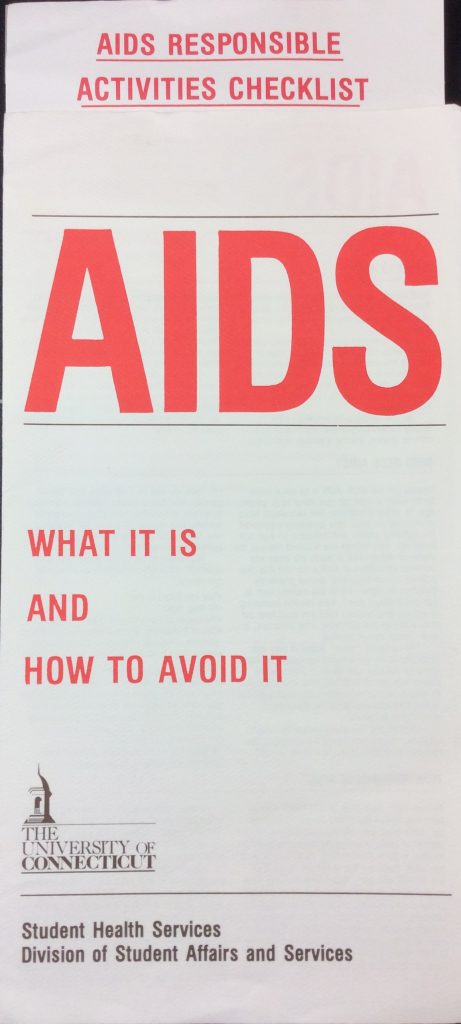
A 2016 fact sheet by the Joint United Nations Program on HIV/AIDS (UNAIDS) notes that in 2015 there were 36.7 million people globally living with HIV, and 17 million were accessing antiretroviral therapy. UNAIDS also reports that new HIV infections have fallen by 6 percent since 2010, from 2.2. to 2.1 million, and the number of new infections in children has declined by 50 percent, from 290,000 to 150,000, during the same time period.
The UConn exhibitions include:
- “AIDS35 and Alternative Publishing” through Sept. 30 at the Archives & Special Collections in the Thomas J. Dodd Research Center, curated by Graham Stinnett, archivist of Human Rights and Alternative Press Collections. Materials include brochures, books, video, and publications drawn from the Human Rights and Alternative Press Collections at the archives, as well as Long’s private collection.
- “Visual AIDS” from Sept. 1 through Oct. 16 in the Balcony Gallery of the William Benton Museum of Art, curated by Jean Nihoul, assistant curator for academic projects. Artwork includes posters, photographs, prints, and other works.
- “Nursing, Medicine, and AIDS,” from Sept. 1 through Nov. 30 in the Atrium of the School of Nursing’s Carolyn Ladd Widmer Wing, curated by Long. The exhibition includes artifacts from donors and a traveling exhibit “Surviving and Thriving: AIDS, Politics, and Culture,” developed and produced by the National Library of Medicine and National Institutes of Health.
More information: wp.dolancollection.uconn.edu/aids35/
